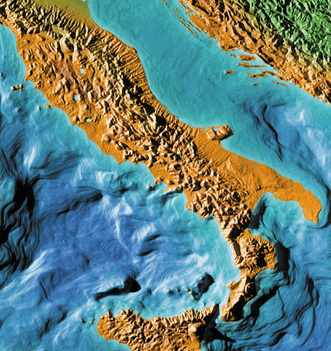It is difficult to imagine a more inspiring role model for a young scientist than Enrico Fermi. The Italian-born physicist made a string of telling contributions, both theoretical and experimental, across many different areas of physics. The index of any physics encyclopaedia is littered with the evidence: fermions, the fermi (10-15 metres), the Fermi energy, Fermi gases and liquids, the Fermi surface, Fermilab and so on. Little wonder that physics has such a high profile in Italy. But what would Fermi, who was born in Rome 100 years ago this month, make of the state of Italian physics today?

There is no doubt that Italy is a world force in physics. When the nations of the world are ranked by the number of physics papers that they publish, Italy is sixth. It also makes the top ten when nations are ranked by the impact of their papers as measured by citations in other publications.
Italy is particularly strong in particle physics, thanks to the legacy of Fermi’s “school of Rome” and the establishment of the Istituto Nazionale di Fisica Nucleare (INFN) in 1951. Italy also boasts a unique underground facility for astroparticle-physics experiments at Gran Sasso. There are centres of excellence in other areas – including astrophysics, atomic and optical physics, condensed matter, superconductivity and various areas of theoretical physics – but nothing to match the strength in depth that is found in particle physics.
But there are two key issues concerning Italian physics – and Italian science in general – that need to be addressed. First is the historical fact that the Italian government spends only about half as much on R&D as other European countries such as France, Germany and the UK. The same is also true for other measures such as the annual production of PhDs and industry spending on R&D.
Second is the current system for making appointments to permanent university positions, about which accusations of unnecessary bureaucracy and cronyism abound (see pages 5-6, print version only). Italian physicists still working in Italy are reluctant to go on the record about the situation, but those elsewhere are not. As Claudio Pellegrini, the Italian-born head of a large physics department in the US, points out: “If there is a new faculty position at UCLA, we look for the best candidate worldwide.” This does not happen in Italy, where sometimes even the best Italian does not get the job.
The new minister for education and research, Letizia Moratti, has said that she intends to tackle both these problems, but Italian physicists are not convinced. Yet there is no reason why the Italian physics community cannot work within the current system to ensure that jobs go to the best candidates available, no matter where they came from in the world. However, it remains to be seen if the all-powerful professors are willing to change their ways.
The world of physics in general, and the US in particular, benefited greatly from the energy and ideas of Enrico Fermi. It seems a shame that Italy remains so reluctant to let physicists from other countries return the favour.
Welcome to Ireland
Although Ireland cannot claim to have as strong a physics tradition as Italy, the Irish physics community can be proud of its performance in the first round of awards made by the new Science Foundation Ireland (see page 13, print version only). When it was announced last year that this generously funded agency was going to concentrate on two areas – biotechnology and information and communications technology – the omens did not look good for physics. But of the first ten awards made, each worth about IR£5.6m (about £4.7m), five have gone to physicists. And setting an example that Italy might do well to follow, four of the awards will be taken up by researchers who are currently based outside Ireland.



